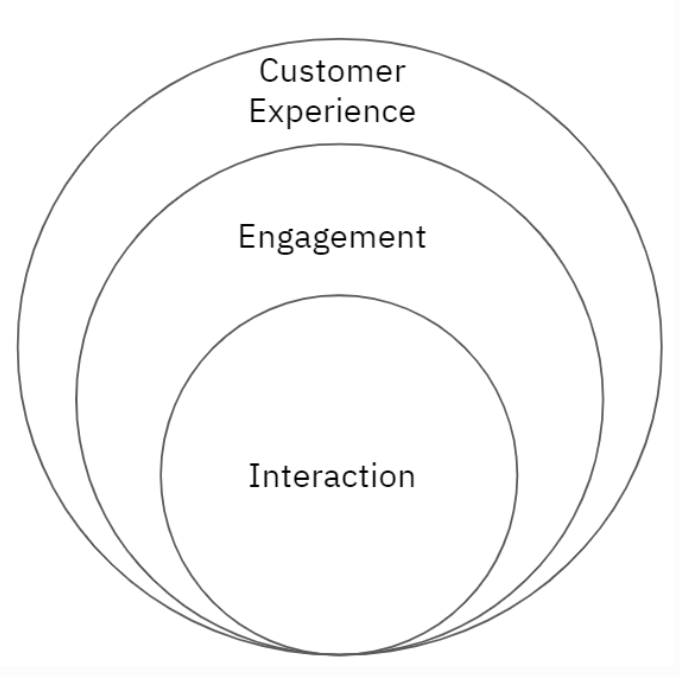Recently, a client asked me what we at InMoment thought defines a “customer interaction,” as there had been some debate on the subject within his team. I pondered the subject and brought it back to my colleagues. Quickly, we were asking ourselves not only about the characteristics of an interaction, but beyond that, what falls under the larger umbrella of customer experience? Is there a difference? Today, we’ll be diving deeper into these questions.
What Is a Customer Interaction?
Webster’s defines “interaction” as:
- Mutual or reciprocal action or influence
- To act upon one another
From this definition, we see clearly that two or more parties are required for an interaction; for example, a company or brand and a prospect or customer.
What Is a Customer Experience?
Harley Manning, VP, Research Director at Forrester, once defined customer experience as: How customers perceive their interactions with your company. He went on to define an interaction as when you and your customers have a two-way exchange.1
Neither Here, Nor There
So what does that mean when a prospect or customer browses your website but does not make a purchase? Or a customer clicks a link in your brand’s email, but does not go any further? According to the definitions above, those are not interactions. But there are a lot of people in companies working very hard to get these actions to happen (click through rate and time on website/app are very common marketing and ecommerce metrics).
If they are not interactions, what are they? I would classify them as engagements. A customer has engaged with your brand, but there was no interaction, because it was only unilateral. Thus, not all engagements are interactions.
And here is where it gets interesting. If the examples listed above are not interactions, but engagements, are they considered part of your customer experience? You better believe it.
The Intersection Between Customer Engagements and Customer Experiences
Customer experience is generally held to be the sum of all interactions someone has with your brand and the resulting feelings they have about your brand. But are experiences limited to interactions or engagements? Do customers have to interact with your people, products, services, or digital properties for their engagement to fall under customer experience?
Today, a company’s policies regarding diversity and inclusion, for example, or the politics, causes, and charities they choose to support have an impact on people’s feelings about the brand. I would argue that these are part of the customer experience as well. There are prospects out there that will choose to never do business with your company based on these issues and other customers who become more loyal for the same reasons.
Returning to the Question
To return to the original question, I would like to suggest that customer interactions and customer experience are concentric circles. An interaction is a subset of engagement, which in turn is a subset of experience.

And companies have to be attentive to all of the ways customers experience their brands, products, and services. Whether or not an engagement ever advances to the level of interaction is an integral piece of the CX puzzle.
Want to hear more from Eric about customer interactions, engagements, and experiences? Stay tuned for the next post in the series!
